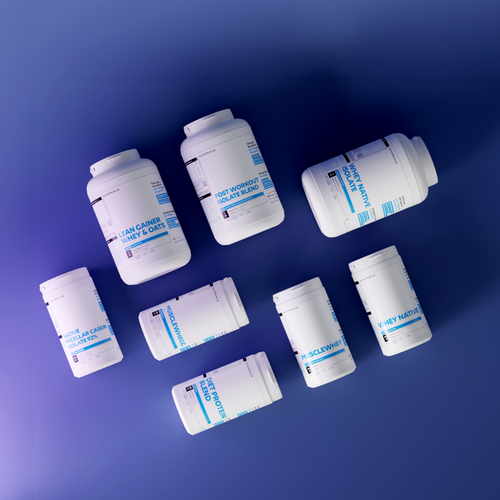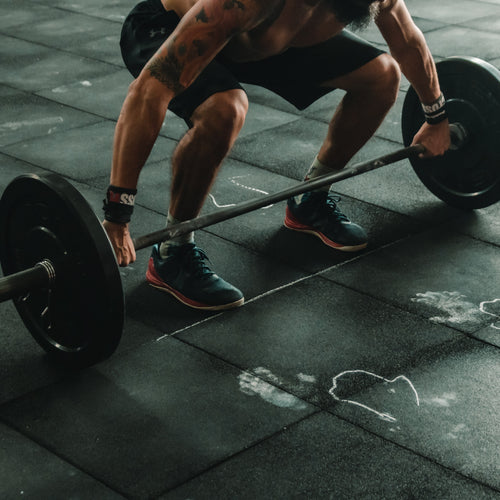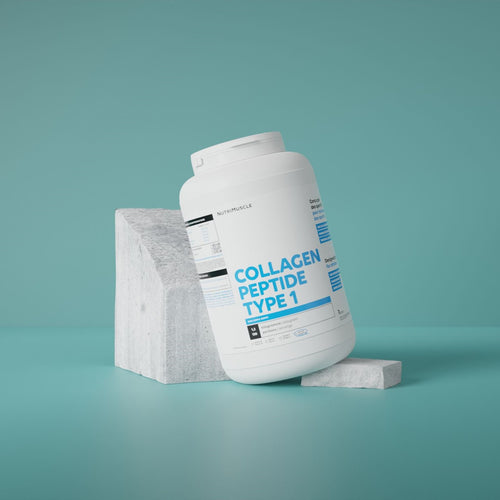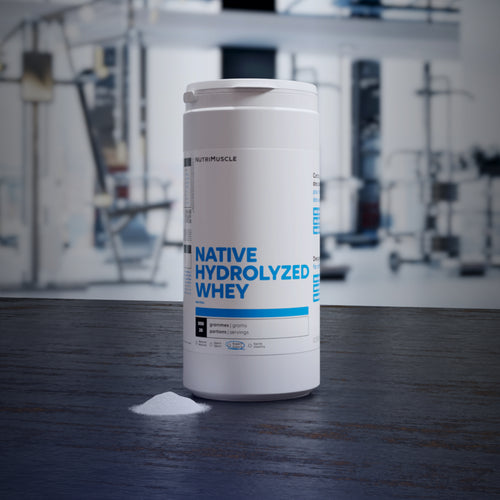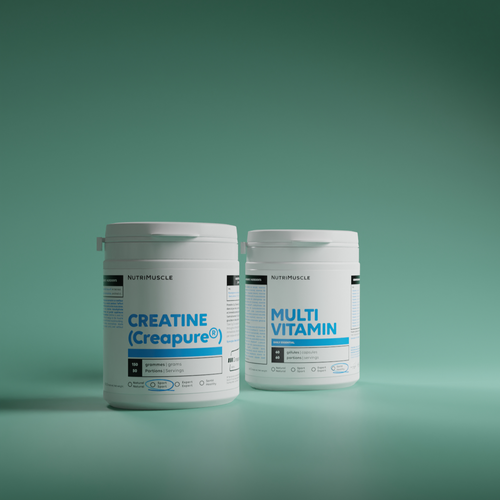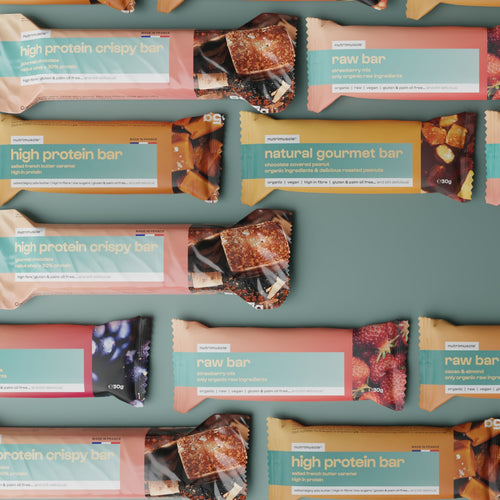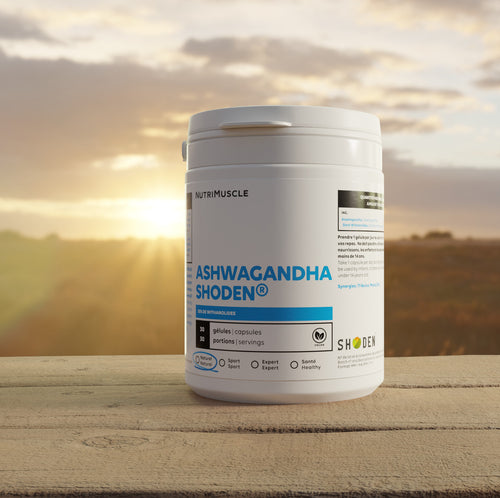0 commentaires
Do you have acne and are you wondering about your diet? What are the three foods most likely to cause acne? Should we stop consuming them? Nutrimuscle answers your questions with many details and figures.
Contents
- How does diet affect acne?
- Acne: an essentially hormonal phenomenon
- The 3 most "acne-prone" foods
- Should milk proteins be avoided if they cause acne?
- Milk proteins: powerful anabolic boosters
- Sedentary VS Sporty
- Food supplements against acne
How does diet affect acne?
Genetics plays a key role in the appearance of acne. In people who are prone to it, diet takes an undeniable aggravating part. Recent research sheds new light on the acne-diet link (1).
Thanks to metabolomics (*), doctors have analyzed the direct impact of nutrients on the cellular processes that lead to acne. What's exciting about this new metabolomics research is that it sheds light on the close link between acne and muscle gain.
Incidence of acne
Acne mostly affects teenagers. It is rare to see a senior covered in acne. It is estimated that around 90% of teenagers will get acne, some more than others. In those over 20 years of age, the incidence decreases to 64%. Among those in their thirties, it drops to 43%.
Those who are prone to acne might think of a never-ending story, but on the other hand, when the production of sebum decreases, wrinkles take the opportunity to settle or deepen.
Acne: an essentially hormonal phenomenon
The first hormone to have been implicated in acne is testosterone, the puberty hormone. It is not for nothing that taking anabolic steroids has, as a first side effect, to give acne.
However, the latest research shows that it is not testosterone that is the most strongly acne-causing hormone. This role falls to IGF-1, a very powerful growth factor (2).
This does not mean that testosterone plays no role, it's just that its acne effect depends on IGF-1 and not the other way around.
For testosterone molecules to act, they need 2 conditions:
- A receptor to stick to: testosterone receptors.
- Once testosterone interacts with its receptor, it needs to be given the green light to act. The permissive green light is the IGF-1 that will provide it. Indeed, in a natural way, the action of testosterone is blocked by a co-regulator which is found within each testosterone receptor. This inhibitor is called FoxO1 .
FoxO1 activity is regulated by IGF-1. When IGF-1 levels are low, FoxO1 is very active and blocks the anabolic activity of testosterone at its receptors. On the other hand, when the body produces a lot of IGF-1, the activity of FoxO1 is effectively suppressed, which gives testosterone the green light to work at full capacity.
Dominant role of IGF-1
Thus, without IGF-1, the action of testosterone is weak. On the contrary, in the presence of IGF-1, testosterone becomes overpowered. In the absence of IGF-1, insulin can act as a FoxO1 repressor. It is by inhibiting the activity of FoxO1 in the skin that IGF-1 increases tenfold the acne action of testosterone (3).
But it's not only at the level of the skin that IGF-1 acts: it has exactly the same effects in the muscles, in order to increase the naturally anabolic efficiency of testosterone. The more the testosterone receptors in the muscles produce FoxO1, the less you will be able to build muscle mass (4).
On the contrary, the less the testosterone receptors produce FoxO1, the easier it is to build up your muscles.
IGF-1 therefore has an essential role in muscle anabolism.
FoxO1-mTOR relationship
mTOR stands for "mammalian target of rapamycin", which does not give much indication of its effects for the layman. If these acronyms seem a bit complicated, know that it is mTOR, which, at the level of muscle cells, triggers anabolic processes.
Protein amino acids, particularly leucine and glutamine , are anabolic nutrients because they stimulate mTOR activity. On the contrary, FoxO1 acts as an anti-mTOR. It is therefore anti-anabolic.
Just as it is anabolic in the muscles, mTOR is also anabolic in the skin by promoting the production of sebum. FoxO1 will mechanically have the opposite effect, which explains why anti-acne medications (excluding antibiotics) promote, among other things, the activity of FoxO1.
So we see that muscle anabolic activity is inseparable from acne stimulating activity.
The 3 most "acne-prone" foods
If acne does not affect everyone with the same intensity, it is both for genetic reasons, but also nutritional. Three main foods are implicated in amplifying acne.
- Carbohydrates with high hyperglycemic power;
- Dairy products ;
- Saturated fats.
If these three foods are the most likely to exacerbate an acne tendency, should they be avoided?
Should milk proteins be avoided if they cause acne?
If dairy products and milk proteins (whey, casein, total protein) are making your acne worse, an obvious strategy would be to replace them with another source of protein that does not have this effect, such as egg protein for example.
However, we must see a little further by wondering about the intracellular mechanisms that these proteins have to exacerbate an acne tendency in some, while they do not have this effect in others.
Milk proteins: powerful anabolic boosters
If delactosed milk proteins give you "pimples", it is not by pathological reaction: it is simply a sign that they place you in an anabolic environment very favorable to muscle growth.
If milk promotes acne, it's just that it's a very anabolic food and a powerful natural mTOR booster via increased IGF-1 production (5) . The anti-anabolic activity of FoxO1 is repressed both in the muscles and in the skin. Muscles, but also acne, can develop.
Allergic reaction vs anabolic reaction
This is not an allergic reaction, but an anabolic reaction (6-7-8).
Beyond milk, amino acids like BCAAs or glutamine can also promote acne for the same reasons as milk: by boosting the body's anabolic environment.
When you see things like this, why deprive yourself of such a natural anabolic opportunity? Rather, it's up to your neighbor to lament that he doesn't benefit from such an anabolic response to dairy protein. For those who find it difficult to reason like this, know that this anabolic opportunity will not last forever. There will come a day when you can take all the dairy protein you want without triggering any acne response. So this is a very limited time anabolic opportunity. When you realize it too late, you can only regret not having looked a little further than the tip of your nose.
The Modern Bad Milk Theory
A very popular theory on the internet explains that only the milk of yesteryear was of good quality. Today, due to modern agriculture and intensive animal husbandry, milk would have become a poison. It is for this reason that it gives acne.
The scientific literature does not support this theory at all, as the link between milk and acne was already established by doctors in the 19th century (9).
Acne is pathological in sedentary people, but not in growing athletes
Professor Melnik's analysis of acne shows that the inflammatory phenomena that result from acne are harmful (1).
If this is true for a sedentary person, what about the athlete?
In a sedentary person, fully stimulating all the intracellular anabolic machinery when the muscles do not need to grow is completely harmful. It's like stepping on both the accelerator and the brake of a car.
Stimulation of anabolic processes
Stimulating the anabolic processes in a sedentary person will only anabolicize fat. We find ourselves overweight, we favor the arrival of diabetes and the rise of cholesterol...
In an athlete, the environment is completely different, because he presses only on the accelerator, not on the brake: therefore, he advances normally. It even needs this naturally very anabolic environment to progress. He will gain weight, but in muscle rather than fat. His regular physical activity will protect him from diabetes and cholesterol.
Wanting to mix things up by taking as an example a sedentary person who is getting fat and whose diet is not at all in line with his needs in order to try to frighten the sportsman who is building up his muscles does not seem intellectually honest to us.
Shouldn't we do anything against acne?
This opportunity for muscle growth does not imply that we should do nothing about acne: not at all. This means that you should not act at the hormonal level: you need to optimize the anabolic action of your testosterone thanks to a surplus of IGF-1.
IGF-1 and insulin also stimulate sebum production (10).
It is for this reason that so-called fast sugars promote acne. In athletes who have difficulty gaining weight, this hormonal action can be beneficial for building muscle. For those who take on fat easily and are prone to acne, it will be necessary to pay attention to their carbohydrate intake.
However, you should not play too much with this lever if you want to develop your muscles. It is not for nothing that on a diet, acne regresses, because the body is placed in a catabolic environment due to an activation of the inhibitory effect of FoxO1. The less you eat, the less IGF-1 you will produce and the more virulent the FoxO1 inhibitory effect will be (11).
If your priority is to fight acne, the low calorie diet will prove to be very effective.
To stop dairy products or not?
If stopping dairy products reduces your acne, it is through global anabolic self-castration. Cutting out dairy protein is one solution, but it's not the right solution .
Rather than acting on the hormonal level by blocking muscle growth, it is necessary to act on the second phase of the onset of acne: at the level of bacterial proliferation. This solution may be a little less effective against acne, but it will not inhibit muscle growth. Always keep in mind that this extremely favorable anabolic environment for the muscles is only very temporary. It will restrict itself fairly quickly.
It's up to you whether you want fewer pimples and less muscle or less pimples and more muscle?
Saturated fats: an aggravating factor at the bacterial level
These bacteria that give pimples do not give muscle. It is therefore at the bacterial level that we can act without inhibiting muscle growth and growth in general, because it is these same hormones that give you muscle that also allow you to grow.
Research shows that saturated fat promotes the growth of acne-causing bacteria in the skin. Saturated fats serve as a favorite food for skin bacteria. Thanks to these fats, they will proliferate, because they have a lot to eat.
By avoiding saturated fats, we will starve the bacteria. Medical analyzes have even shown that omega 3s produce the opposite effect of saturated fats on bacterial proliferation. Omega 3s therefore represent an effective way to fight acne in a healthy way, without weakening muscle anabolism (12-13-14-15).
We therefore find, thanks to the judicious choice of fats, two effective ways of fighting, in the long term, against acne.
What are the most effective nutritional supplements for acne?
Along with omega 3, supplements such as Peptan, N-AcetylGlucosamine, glycine, zinc and vitamin B3 are effective weapons against acne and for skin health, without hampering intra-cellular mechanisms. muscle growth (16-17).
Scientific references
(*) For a complete definition of metabolomics which studies the impact of nutrients on our cells, see: https://fr.wikipedia.org/wiki/Metabolomics
(1) Melnik BC. Linking diet to acne metabolomics, inflammation, and comedogenesis: an update. Clinical, Cosmetic and Investigational Dermatology 2015 8 July: 371—388.
(2) Deplewski D. Growth hormone and insulin-like growth factors have different effects on sebaceous cell growth and differentiation. Endocrinology. 1999;140(9):4089–4094
(3) Mirdamadi YS. IGF-1 induces nuclear upregulation of p-Akt and controls expression of nuclear transcription factor FoxO1 levels in SZ95 sebocytes. Exp Dermatol. 2014;23(3):E18.
(4) Qin W. Identification of functional glucocorticoid response elements in the mouse FoxO1 promoter. Biochem Biophys Res Commun. 2014 Jul 25;450(2):979-83.
(5) Melnik BC. Milk is not just food but most likely a genetic transfection system activating mTORC1 signaling for postnatal growth. Nutr J. 2013;12:103.
(6) Melnik BC. Evidence for acne-promoting effects of milk and other insulinotropic dairy products. Nestle Nutr Workshop Ser Pediatr Program. 2011;67:131–145.
(7) Simonart T. Acne and whey protein supplementation among bodybuilders. Dermatology. 2012;225(3):256–258.
(8) Silverberg NB. Whey protein precipitating moderate to severe acne flares in 5 teenaged athletes. Cutis. 2012;90(2):70–72
(9) Bulkley LD. Acne, its Etiology, Pathology and Treatment. 1885. New York, NY: G. P. Putnam's Sons.
(10) Vora S, Ovhal A, Jerajani H, Nair N, Chakrabortty A. Correlation of facial sebum to serum insulin-like growth factor-1 in patients with acne. Br J Dermatol. 2008;159(4):990–991.
(11) Large DN. The role of FOXO in the regulation of metabolism. Curr Diab Rep. 2009;9(3):208–214.
(12) Jung JY. Effect of dietary supplementation with omega-3 fatty acid and gamma-linolenic acid on acne vulgaris: a randomized, double-blind, controlled trial. Acta Derm Venereol. 2014 Sep;94(5):521-5.
(13) Desbois AP. Antibacterial activity of long-chain polyunsaturated fatty acids against Propionibacterium acnes and Staphylococcus aureus. Mar Drugs. 2013 Nov 13;11(11):4544-57.
(14) Khayef G. Effects of fish oil supplementation on inflammatory acne. Lipids Health Dis. 2012 Dec 3;11:165.
(15) McCusker Messrs. Healing fats of the skin: the structural and immunologic roles of the omega-6 and omega-3 fatty acids. Clin Dermatol. 2010 Jul-Aug;28(4):440-51.
(16) Dreno B. Effect of zinc gluconate on propionibacterium acnes resistance to erythromycin in patients with inflammatory acne: in vitro and in vivo study. Eur J Dermatol. 2005 May-Jun;15(3):152-5.
(17) Niren NM. Pharmacologic doses of nicotinamide in the treatment of inflammatory skin conditions: a review. Cutis. 2006 Jan;77(1 Suppl):11-6.


